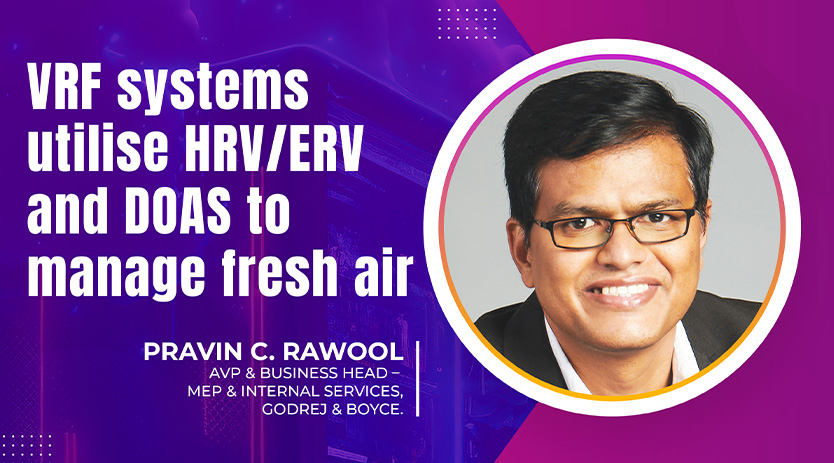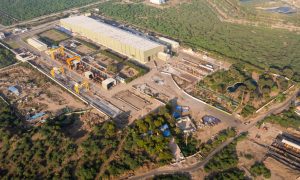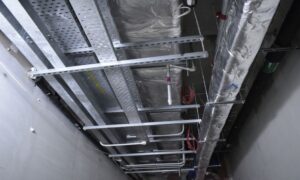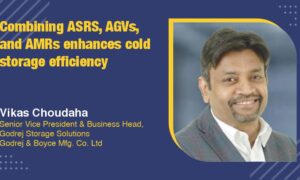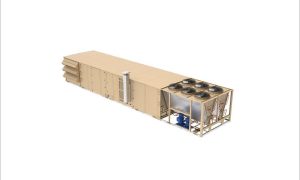Pravin C. Rawool from Godrej & Boyce discusses the growth of the heating and ventilation market focusing on energy efficiency, and eco-friendly refrigerants, and also talks about strategies for improving indoor air quality, including enhanced filtration and UV radiation.
How do you evaluate heating and ventilation market growth?
The changing climatic conditions are causing variations in ambient temperature, and the need for comfort is driving the HVAC market. One of the megatrends propelling India’s growth is urbanization, which is also a key factor driving HVAC growth, especially in developing economies. According to the global report, the HVAC industry is valued at USD 136.3 billion in 2022 and is projected to grow at a CAGR of 6.3% from 2023 to 2030.
There is a strong emphasis by OEMs on energy efficiency and the use of refrigerants with minimal impact on the environment. At MEP, we continuously leverage our technical expertise for value engineering in HVAC, with a strong focus on reducing energy consumption during operations and improving reliability. As an EPC contractor operating across various segments, namely data centers, e-commerce, commercial, and infrastructure, we strive to execute projects efficiently.
What latest heating and ventilation equipment are being used to control air purity?
Indoor Air Quality (IAQ) refers to the purity of air within and around buildings and structures, particularly concerning the health and comfort of occupants. Understanding and managing air purity can help reduce the risk of indoor health issues. This can be accomplished through a combination of operational control (improved air change per hour), technology implementation (such as UV radiation and ionization in air handling units), and enhanced filtration (MERV 13).
All of these aspects also require proper installation, end-to-end integration, and better control through Building Management Systems (BMS) and IoT. Over the years, we have successfully executed numerous projects, utilizing our expertise in end-to-end integration.
The VRF systems manage the fresh air before it is distributed into the building. Your opinion.
“Variable Refrigerant Flow” (VRF) has three common ventilation air strategies: direct, integrated, and decoupled. Both the direct and integrated strategies utilize the heating/cooling duct of the VRF system to supply fresh air. However, in the decoupled strategy, a separate ventilation duct is dedicated to delivering fresh air to all occupied zones, separate from the heating/cooling duct.
It is inevitable that VRV will become even more popular in the foreseeable future. We are well-positioned to embrace the anticipated challenge with a proficient in-house team that has successfully handled and commissioned various OEM-based VRV projects.
What new developments have taken place in heating and ventilation equipment technology?
There are continuous efforts to optimize cooling solutions through advancements in products by OEMs and the introduction of new technologies. Some notable examples include district cooling, evaporative and geothermal cooling, radiant cooling, underfloor air distribution, the latest generation of VRV systems, MagLev chillers, and water treatment solutions like electrochemical and side stream filtration. This list is not exhaustive, as there are ongoing developments in HVAC technology.
At our end, we are constantly updating ourselves with futuristic designs and software, delivering innovative solutions. Our customers have acknowledged our efforts and the positive outcomes we have achieved in recent times. As a result, we are now regarded as a preferred partner for their needs, ensuring sustained customer satisfaction and supporting their sustainable journey. Furthermore, we have received various accolades that highlight our outstanding contributions to the industry.

What innovations have taken place in your businesses?
We prioritize innovation, with a strong emphasis on energy efficiency and cutting-edge technology. Furthermore, we are making significant investments in technology and software, including PIPENET for hydraulic calculations, HAP for Heat Analysis, and BIM for coordination. These investments allow us to validate designs and provide value engineering solutions to our clients.
The HVAC industry has the potential to greatly enhance energy efficiency, optimize system performance, and provide real-time performance data. Our focus has been on adopting advanced monitoring tools such as AI/ML, automation, IoT, and digital solutions.
What new developments are occurring in HVAC systems to control environmental conditions?
Developments are happening on both the high side and low side, including adiabatic cooling towers, heat pumps, and waste heat recovery, among other technologies. However, an integrated commissioning approach is needed to achieve the planned objectives and create a positive impact. It is crucial to address the widespread and severe environmental effects that we are currently witnessing.
At MEP, our team of experts is highly skilled and capable of carrying out the commissioning of heating, air conditioning, and ventilation equipment in accordance with the specific end requirements.
Cookie Consent
We use cookies to personalize your experience. By continuing to visit this website you agree to our Terms & Conditions, Privacy Policy and Cookie Policy.

